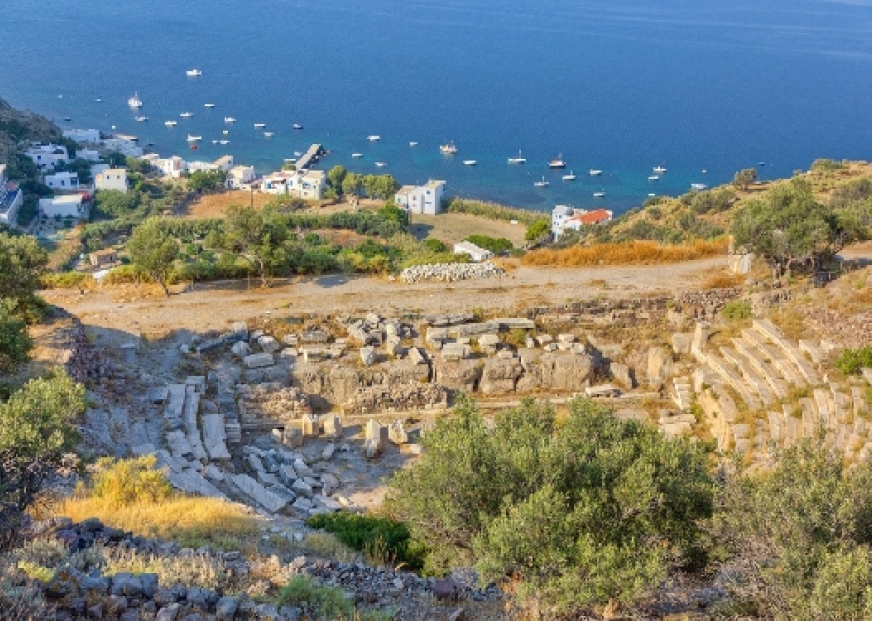2 MIN
TRAVEL TIPS
Milos island: An Archaeological tour

This ''geological peculiarity'' of Milos was identified by the Neolithic man. As documented by the archaeological findings, the obsidian of Milos was used for manufacturing tools and weapons. The first mining facilities were located in Nichia, just outside the current city of Adamas. By entering the Bronze Age (3000 BC), more mining facilities were founded.
At the same time, the first organized settlement was founded in Phylakopi. The archaeological site of Phylakopi is located in the northeastern part of the island. The area is characterized by dense structuring surrounded by huge walls. Today, a large part of the settlement is submerged beneath the sea. The life of the city last almost 2,000 years until its final abandonment in 1100 BC.
During the Geometric period (11th-8th century BC), a new tribe arrived to the island who settled in Klima. The ancient city of Milos flourished and became center of pottery and miniature. The rich archaeological finds in the area include the ancient theater with its impressive sculptures, imposing walls and various statues. The most important is the world-famous statue of Aphrodite of Milos who is currently preserved in the Louvre museum in Paris.
The intense conflict between Athens and Sparta in the 5th century BC affected the island. The refusal of the residents of Milos to war with the Athenians led to their destruction. In Hellenistic times, the area bloomed once again. In 27 BC the island was converted into a Roman province. The Roman architecture is reflected to the remains of various infrastructures (baths, port facilities, private buildings) in Klima. The archaeological journey to the island ends with the impressive catacombs of the 2nd century AD. The Catacombs of Milos are located in a short distance from the ancient theater at the south of Tripitis settlement. It is a cluster of arcades that were used as a Community Cemetery in Early Christian times until the 5th century AD.



